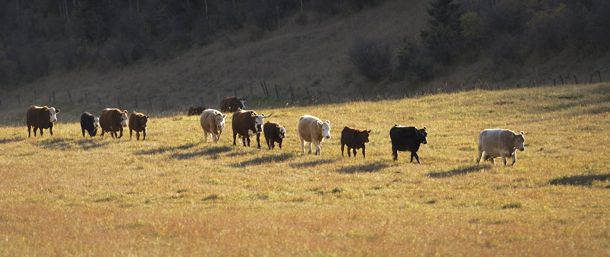Chicago | Reuters –– U.S. cattle futures fell as much as 2.5 per cent on Monday, with both live and feeder cattle contracts posting their largest daily declines in two weeks on ample supplies and expectations for improved weather in the southern Plains.
Snow, ice and rains slowed movement of cattle to market last week in the Plains, reducing U.S. beef production. But conditions in the region were expected to be drier for the next week, MDA Weather Services said in a note to clients.
Read Also

U.S. livestock: Cattle fall sharply as Trump says he’s working to lower beef costs
Chicago cattle futures fell sharply on Friday after U.S. President Donald Trump said his administration was working to lower the…
Some feedlots also were offering larger number of cattle for sale this week on their so-called “show lists,” further weighing on prices, traders said. A “lower undertone” in feeder cattle prices was noted at a closely tracked cash auction in Oklahoma City, according to the U.S. Department of Agriculture.
“We had a weather worry last week. The fact that there’s nothing in the forecast this week is why they’re taking some premium out of the market,” said Domenic Varricchio, a broker at Schwieterman Inc. in Kansas.
Feeder cattle posted the largest declines, with January futures falling 3.275 cents, or 2.4 per cent, to settle at 162.75 cents/lb. (all figures US$). Most-active February live cattle eased 1.5 cents, or 1.4 per cent, to 132.35 cents/lb.
The losses came even as wholesale beef prices continued to climb. USDA said the beef cutout was up $1.25, to $205.65/cwt, rising the fifth straight day after last week hitting a 23-month low.
Wholesale pork also gained, rising $1.50, to $73.90/cwt, suggesting recent low prices in each pork and beef enticed buying from retailers, the traders said.
Lean hog futures were widely mixed. The first three contracts eased — most-active February futures fell 0.875 cent, or 1.2 per cent, to 56.8 cents/lb. — while contracts from May 2016 to April 2017 were narrowly higher.
Hogs for prompt delivery remained under pressure by big supplies of hogs and pork, even as investors expected pork production to peak for the season soon, if it had not already.
“We’re processing a ton of pork, but some are questioning what the forward supply may be,” one lean hogs trader said of the bear-spreading in futures.
— Michael Hirtzer reports on agriculture and ag commodity markets for Reuters from Chicago.














